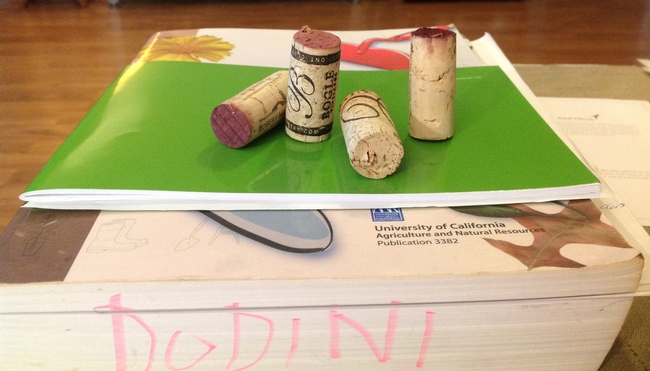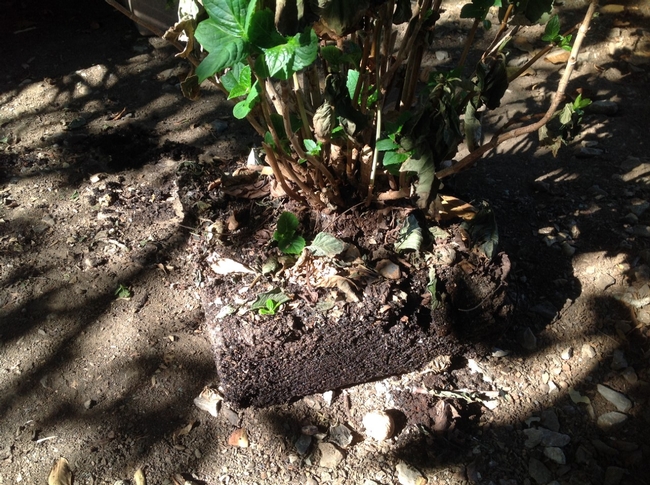A Lesson About Getting Carried Away
This past summer, I had to stress my hydrangeas terribly by moving them to replace the entry deck. In the meantime, I tried to keep them, and several other plants, alive despite their roots having been cut and moving them "out of the way" while the work was being done.
Next part of the story ---
One day my daughter texted me from work because one of her regular customers asked for some corks that could not be sold for whatever reason. She said he was going to put them in his garden to help with water retention. She was curious about why. (My daughter works in the part of the wine industry that we appreciate briefly and then get to the good stuff -- the company puts the logo on the corks for many of the wineries that we enjoy in the Napa area.) Anyway, I was intrigued because it was so hot and my hydrangeas had been suffering before I moved them. Water retention is a good thing, and I was spending a good deal of time on watering. And, I had a bunch of corks sitting in a bucket doing nothing, but I couldn't get myself to throw them away.
So, I couldn't see how said corks were going to retain water in their intact state. Really. After all, what is their purpose if not to keep the wet stuff inside the bottle? Plus my daughter explained the process in the production is to put silicone on the corks after they are printed with the winery logo so the cork can be put in the bottle and create a seal. I got on the Internet and pretty much everything I found led me to Pintrest. (Should have been a clue, but I missed it.). What I did learn is that as a newbie to Pintrest, a person can get seriously carried away there. I found that many sites were recommending using cut or ground corks as mulch and saying that cork is better than regular mulch because it doesn't suck nutrients away from the plants as regular mulch does. WHAT????? I looked at several articles from the University of Just About Everywhere with an Ag. Dept. that told what kind of nutrients different kinds of mulch delivered to the garden over what period of time. (Missed another clue there.) Still, I think I was sucked in by all the pretty pictures.
So, I wrote up a blog chronicling my project with the corks and hydrangea. Jennifer (MG Coordinator) asked for actual science about how the corks retain water in the soil. Back to the drawing board and Internet to research corks. Finally, after quite a while, I find that corks, like all barks, are "hydrophobic". So much for retaining water in the soil!
Conclusion to the story ---
I really didn't do anything to harm my hydrangea. It needed to be repotted because had the roots not gone through the bottom of the pot, it would have suffered, but oh well... My "DO YOUR RESEARCH FIRST" mantra has been reinforced.
Cut up corks, but not nearly enough to really keep moisture in. Plus, I think the birds have taken some out because there are a lot less there now than there were when I took this picture.
This is how the plant looked when I took it out of the pot. The soil was pretty compacted and old and mostly root. So far, this plant has survived and is happily back where it came from.

photos by Jenni


